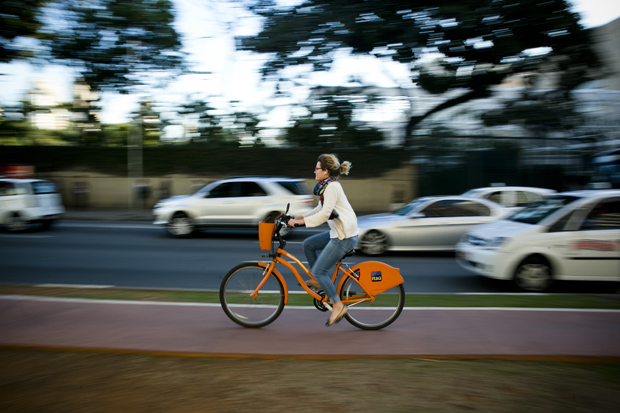Latest Photo Galleries
Brazilian Markets
13h15 Bovespa |
+1,45% | 126.455 |
16h43 Gold |
0,00% | 117 |
13h23 Dollar |
-0,94% | 5,1150 |
16h30 Euro |
+0,49% | 2,65250 |
ADVERTISING
After Growing Tenfold in 70 Years, Brazilian Cities Have to Improve Mobility
07/23/2018 - 11h49
Advertising
LEÃO SERVA
FROM SÃO PAULO
When the Brazilian Men's Soccer Team began the 1970 World Cup, its fans chanted: "90 million in action." When the World Cup in Russia began this year, the estimated population in Brazil was 213 million.
No urban plan has been able to deal with this sharp increase in population. As a result, Brazilian cities have problems in all areas.
It is not different in the mobility segment: São Paulo and other Brazilian capitals have become symbols of chaotic traffic, alarming levels of pollution, long hours commuting and overcrowded public transportation.
The city of São Paulo, the biggest in the country and a symbol of the 20th century's skyrocketing growth, has seen its population remain stagnant in some 12 million inhabitants on the city boarders.
The stability, however, hides much internal movement. The central neighborhoods, with well-established infrastructure for decades, has seen residents move out since the 1980s, while the number of people living in the city's outskirts, where there are few schools, hospitals and jobs - and little transportation- has increased.
This uneven development pressures authorities for mobility solutions that can allow residents of distant areas to arrive at their workplaces, concentrated in central regions.
A well-know case, but still unsolved, is that of Cidade Tiradentes, a poor neighborhood in São Paulo's east zone, built by São Paulo's Metropolitan Housing Company (Cohab). Thirty-four years after its inauguration, the City Hall registers a little over 200,000 inhabitants; however, the region offers only 10,000 jobs. Thus, workers have to travel 35 kilometers to the city center every day to work.
The relative population stability will give the next administration the chance to select priorities in the area of mobility.
It is a question of building fewer streets and avenues and improving the transportation service of people on the existing streets and avenues.
| Fabio Braga/Folhapress | ||
 |
||
| As some city planners interviewed by Folha said, it is a question of thinking less about urban hardware and more about software |
Translated by THOMAS MUELLO



